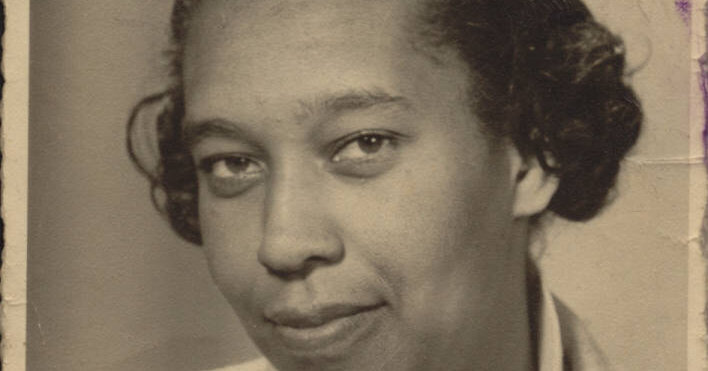Her Music Fell Into Obscurity. Now It’s Back at the Philharmonic.

The New York Philharmonic’s program this week contains familiar names, Gustav Holst and György Ligeti. But in between is a first for the orchestra: “Stabat Mater,” a 1951 work for contralto and strings by Julia Perry.
This will not be the first time that Perry has shared the stage with more well-known composers. In February 1954, the Columbia University Composers Forum presented the “Stabat Mater” alongside George Antheil’s “Ballet Mécanique.” In a post-concert discussion, Perry charmed the audience, seated between Antheil and Aaron Copland, the event’s host. The critic Ross Parmenter wrote in The New York Times that the “Stabat Mater” “lingered poignantly in the memory.”
For Perry, a Black composer who died in 1979 at age 55, the 1950s and ’60s were replete with success, the summit of a career that fell into obscurity despite musicians’ admiration of her work. The mezzo-soprano J’Nai Bridges, who will make her Philharmonic debut performing in the “Stabat Mater” solo part, said of the piece: “I love the vocal writing. It’s intense, it’s very introspective, it’s very intimate and also very extreme.” Dima Slobodeniouk, who will conduct the program, described it as “logically and beautifully written.”
The “Stabat Mater” helped Perry earn two fellowships from the Guggenheim Foundation after its premiere. She also drew acclaim from European audiences as a touring conductor and composer, and in November 1954, Columbia invited Perry back for the world premiere of her opera “The Cask of Amontillado.” A 1964 citation that Perry received from the National Institute of Arts and Letters commends her as “a fine composer whose works display the unusual combination of being truly original and at the same time widely accepted.”
In 1965, the New York Philharmonic performed Perry’s “Study for Orchestra,” a revision of “A Short Piece for Orchestra”(1952), and the ensemble’s first instance of programming a work by a Black woman. That moment, though, came at the onset of a long and tragic professional decline.
The musicologist Mildred Denby Green has written that around this time, Perry was severely restricted by illness. The composer’s correspondence with the Philharmonic also reveals extreme financial distress: A collect telegram she sent from her home in Akron, Ohio, on May 29, 1965, said, “Unemployed at this time I am without the barest essentials.”
When Perry died, she had no children and only a few published works. Although scholars have identified about 100 of her manuscripts and scores, dozens cannot be performed or recorded because there is no established copyright holder. As Christopher Wilkins, the music director of the Akron Symphony, said, “all the work is protected; it just hasn’t been licensed, and can’t be until whoever controls it negotiates that.”
Wilkins first found Perry’s compositions in 2020, and marveled at what he saw. She, he said, “may be the most accomplished and celebrated composer ever to emerge from Akron.” He then asked the soprano and scholar Louise Toppin, who leads the African Diaspora Music Project, to help him explore Perry’s output and edit some of her manuscripts.
That partnership led Wilkins to conduct eight of Perry’s orchestral works in concerts and private readings, including a performance and recording last year of “Frammenti dalle Lettere di Santa Caterina” (1953) with Toppin as the soloist. The Akron Symphony has also engaged a local lawyer to help resolve the copyright ambiguities that ensnare many of Perry’s compositions — a barrier to overcome for those interested in her music, beyond historical practices of exclusion among American institutions.
But this week’s Philharmonic program joins high-profile presentations of Perry’s works, such as the Minnesota Orchestra’s performance earlier this month of “A Short Piece for Orchestra,” that are bringing necessary attention to her legacy at a critical time. Toppin said that if Perry is performed by leading ensembles, “that’s going to help influence the field.”
The 100th anniversary of Perry’s birth is coming on March 25, 2024. That month, the Bright Shiny Things label will release a world premiere recording of her Violin Concerto, featuring Curtis Stewart as the soloist, under the baton of James Blachly with the Experiential Orchestra.
In the Violin Concerto, Blachly said, “the extent of the imagination that goes into what she can draw out of a very small set of musical materials is miraculous.” In an email, Stewart described it as testing “the bounds of the musical/emotional content in all its permutations.”
Perry finished the concerto in 1968, but it lacked a performance-ready edition until recently. The composer Roger Zahab spent 45 years reconstructing the score from various copies and sets of revisions, beginning with a piano reduction he received in 1977. “It was very difficult to walk away from the piece for any length of time,” he recalled. “Perry was obsessively meticulous in so many ways.”
Audiences who hear Bridges sing the “Stabat Mater” will perhaps learn, or be reminded, that Perry’s brilliant creativity makes the struggle to include her in classical music worthwhile and necessary.
“Programming Julia Perry is about making room,” Bridges said. “Not just to tick boxes, but because we want to continue performing beautiful music.”





